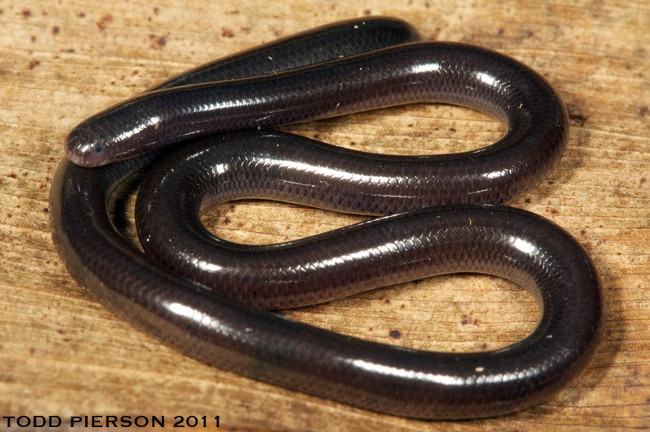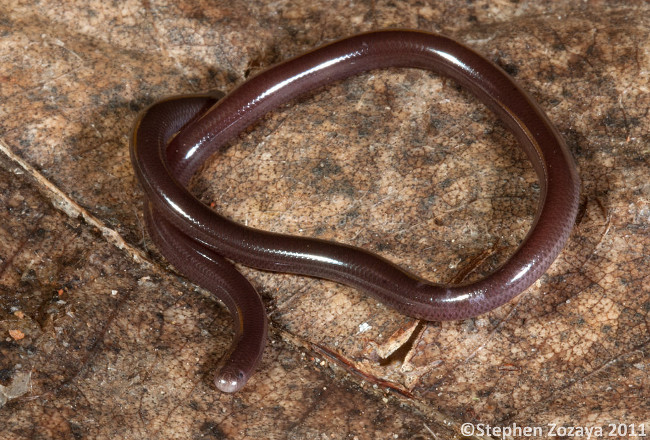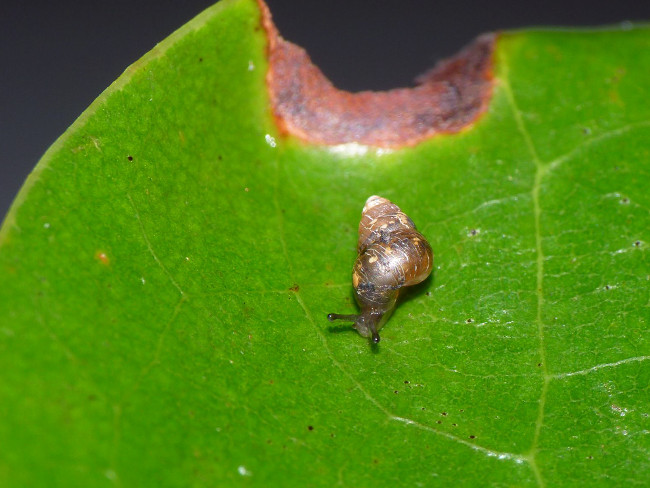3 creatures still 'resilient' survive after being eaten
Nematode worms, snails, and snake worms are animals that can survive healthily after being swallowed and must pass through the predator's digestive system.
- The mystery behind the viability of the only "immortal" creature on Earth
- Discover 5 strange creatures than even science fiction novels
Blind worm
 3 creatures still 'resilient' survive after being eaten Picture 1
3 creatures still 'resilient' survive after being eaten Picture 1
Blind worm snakes can survive after being eaten by a toad.(Photo: Internet.)
In 2012, biologists discovered a blind worm snake emerging from the Asian toad anus during the East Timor expedition. The researchers were astounded because this was the first time they had witnessed a large-sized prey out of the toad's gastrointestinal tract but still alive despite problems like stomach acid. thick or prolonged lack of oxygen.
What makes the worm worm able to overcome the toad's "death gate"?
Worm snake skin with overlapping and interwoven scales may play the most important role. This special structure makes stomach fluids unable to touch sensitive tissue and organs under the skin of a blind worm. While the scales of other snakes often reveal gaps in the movement process, it does not provide this protection.
On the other hand, due to living underground, worm species do not need much air to survive.
According to the researchers, the worm worm actively crawls through the intestine to escape the toad instead of being pushed by intestinal contractions. The worm worm has a long, slender spirit, only a few millimeters wide, so it can easily slip through small holes and narrow slots like the toad's digestive tract.
 3 creatures still 'resilient' survive after being eaten Picture 2
3 creatures still 'resilient' survive after being eaten Picture 2
Worm snakes pass through the digestive tract easily thanks to their long, slender bodies.(Photo: Internet.)
In addition, another factor is also said to contribute to helping the blind worm "escape death" is the eating habits of predators. According to the researchers, the toad has "starved" before swallowing the snake, making its intestines empty. This helps the worm's journey faster, minimizing exposure to digestive acid. The time to pass through the intestine will determine the life and death of the prey.
Researchers do not know how long the snake performs its journey out of the toad's digestive system. Although the escape was successful, unfortunately the worm worm still died after 5 hours. Although it is not possible to examine it to determine the exact cause of its death, the researchers believe it is due to oxygen-deficient complications.
Snail
Snails need less oxygen to survive so its chances of survival are higher. In 2011, scientists at Tohoku University in Japan conducted an experiment to test the "tough" sunshine of snails. They fed the white-eyed birds the small snails of the species Tornatellides boeningi.
 3 creatures still 'resilient' survive after being eaten Picture 3
3 creatures still 'resilient' survive after being eaten Picture 3
Small land snails are enough to survive through the journey in the gut.(Photo: Internet.)
Results showed that about 15% of snails pass the journey with time lasting about 20 to 120 minutes and still survive. This proves that snails can survive digestion in the short term, when not fully exposed to digestive juices. The snail shell as a natural shield helps them to be resistant to digestion, while the slime produced by snails also increases their protection from acidic environment.
Researchers found that snails with a wide shell of less than 2.5 mm often survived, while larger ones often crumbled. This proves that the size of snails also plays an important role, determining their survival when swallowed by predators.
Round worms
The research team at Kiel University in Germany was surprised to find the nematode, whose scientific name is Caenorhabditis elegans, is still alive in the feces of northern Germany. The fact that the nematodes can overcome the crushed mouth and the acid environment in the digestive system of snails is too much of their imagination.
 3 creatures still 'resilient' survive after being eaten Picture 4
3 creatures still 'resilient' survive after being eaten Picture 4
The team found that both young and mature nematode worms live in snails while other nematode species found in snails and earthworms are in the form of parasites and often penetrate through gut holes.
According to the researchers, the larvae 's hard shell to protect them during development is the reason for the harsh conditions in the snail' s digestive system. But what helped the adult nematodes survive through the digestive tract is still a mystery.
You should read it
- 'Immune to poison' These 7 predators eat poisonous snake meat as easily as ... 'eat candy'
- Art 'stealth' masters to hunt the desert snakes
- Brown snakes survived miraculously after being swallowed by the black snake and then released
- Discovering new snakes, whole body covered with strange sparkling gold
- The ultimate snake surgery of the tall bird is called the 'Taekwondo killer'.
- I have the unique venom in the world of snakes, the sea snakes are eating again and again in a moment
- Jade snake snake - Beauty queen snake in Vietnam
- There are 50 venomous snakes, this is the most unique snake on the planet
- At the end of the battle of death, the poisonous tiger was swallowed by the king's snake
- 'Snake kingdom', where snakes go back into flocks in Vietnam
- Going on the wrong road, the rat snake is re-eaten by the tiger with the lord
- Identify poisonous snakes in Vietnam
May be interested

The flying owl summarizes the 'lightning fast' prey of the world's fastest flying bird

Australian man borrowed crab claws to open the cap of beer bottle

The scorpion of freshwater crab war, the battle of the couples

Crystal whirlpools on the top of the Andes, an unprecedented phenomenon in history

Super Earth's most dangerous volcano can 'explode' soon causing the biggest eruption in history

The new butterfly was first found in Israel after 109 years






 The mystery behind the viability of the only 'immortal' creature on Earth
The mystery behind the viability of the only 'immortal' creature on Earth 10 strange creatures found in the deep sea in 2021
10 strange creatures found in the deep sea in 2021 Here's how to use Resilient File System (ReFS) on Windows 10
Here's how to use Resilient File System (ReFS) on Windows 10 The most bizarre creatures are found by scientists under the sea floor of Australia
The most bizarre creatures are found by scientists under the sea floor of Australia Configure Smalland: Survive the Wilds on PC
Configure Smalland: Survive the Wilds on PC Whether alive or extinct, these giant creatures will make you feel tiny
Whether alive or extinct, these giant creatures will make you feel tiny